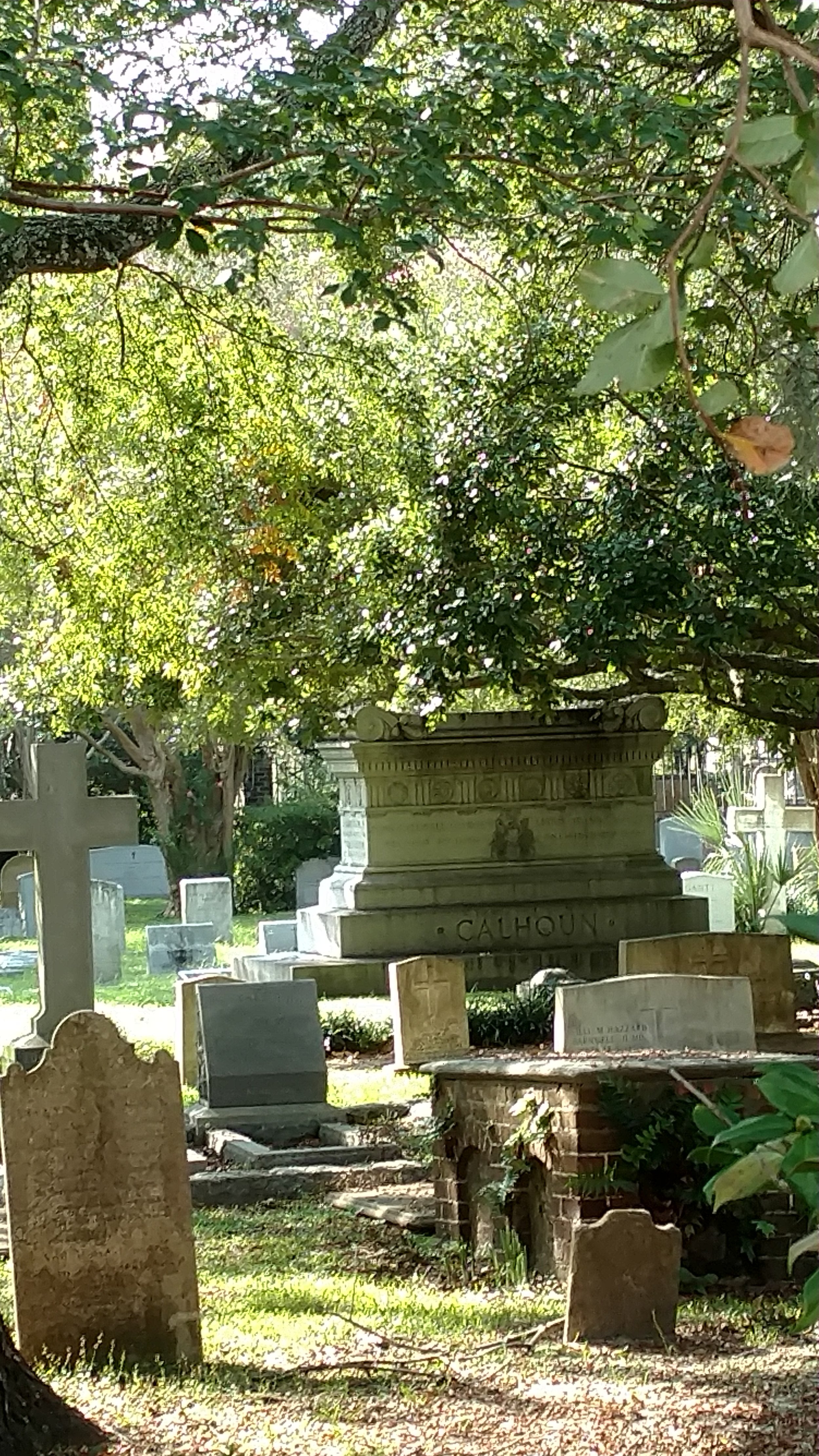Historic Graveyards and Cemeteries
Fall is one of the best times to explore Charleston on foot. While many consider this time of year to be “ghost tour” season, I highly recommend taking a self-guided stroll through a local cemetery or graveyard. Many are open to the public and chocked full of history.
Graveyards, Cemeteries & Burial Customs
Contrary to popular belief, graveyards and cemeteries are different. Graveyards are in churchyards, while cemeteries are free standing. St Phillip’s Episcopal Church, located at 142 Church St., offers a great example of this practice. The church campus features a graveyard, adjacent to the church itself. It is the final resting place of church members who were native born Charlestonians. Church members from somewhere else, or “off” as locals say, are buried in the West Cemetery located across the street.
The custom of church graveyard burials originated in England and became a widespread practice in the South. Early headstones were wooden posts and rails, and these were used until the 1820s. The oldest known wooden "graverail" headstone is that of Mary Ann Luyten (1743-1770). It remains preserved in the Charleston Museum, and a reproduction resides in St. Michael’s Episcopal Church graveyard.
Burials were prohibited in the lower city due to health concerns in 1836. Park cemeteries were established in the "Neck" area of the Charleston Peninsula. Three of the largest and most notable cemeteries are Magnolia, St Lawrence, and Bethany.
Historic Graveyards & Cemeteries in Charleston
St. Philip’s Graveyard & Cemetery
St. Philip’s Graveyard & Cemetery
St. Philip’s Graveyard & Cemetery
The St. Philips congregation dates back to 1681, and the original building was located where St Michaels sits today (on the corner of Meeting and Broad Streets). The original church was small and constructed out of black cypress. This building was badly damaged in a hurricane in 1710, and the congregation moved into a second building at their current location on Church St. The current structure was completed in 1838 after the second building was destroyed by fire in 1835.
A number of noteworthy individuals are buried in the graveyard of St. Phillips, including DuBose Heyward, author of the novel Porgy which was later adapted by George Gershwin into the 1935 Opera Porgy and Bess. Heyward was also a descendant of Thomas Heyward, signer of the Declaration of Independence. John C. Calhoun, Vice President of the United States under President Andrew Jackson, is buried on the premises.
The graveyard and cemetery gates are open to the public during church office hours (8:30am-4:30pm Monday-Thursday and 8:30am-1:00pm on Fridays).
St. Michael’s Graveyard
St. Michael’s Graveyard
St. Michael’s Church, located on the corner of Meeting and Broad, was completed in 1761. It is considered the finest example of Georgian church architecture in America. Since St. Phillip’s burned to the ground in the 1800s, St. Michael’s is the oldest church edifice in Charleston.
St. Michael’s graveyard is the final resting place of two signers of the American Constitution—John Rutledge and Charles Cotesworth Pinckney. Pinckney is the eldest son of Eliza Lucas Pinckney who was responsible for bringing the first indigo crop to market. Indigo accounted for a significant amount of the colony's exports before the Revolutionary War. George Washington was a pallbearer at her Philadelphia funeral in 1793. Charles C. Pinckney served under Washington as an officer in the Revolutionary War (1775) and then later as a foreign minister to France during Washington’s presidency (1796). He ran in two presidential elections (1804 and 1808) and lost both.
St. Michael’s is generally open to the public Monday-Saturday (9:00am-4:00pm Monday-Thursday, 9:00am-3:00pm on Fridays, and 8:30am-12:00pm on Saturdays).
The Unitarian Church Graveyard
The Unitarian Church Graveyard
The Unitarian Church, located at 4 Archdale Street, was completed in 1787. It is home to one of Charleston's most unique and picturesque graveyards. The landscaping grows naturally around the grave markers which provides a peaceful setting.
Legend has it that the ghost of highway robber and reputed serial killer, Lavinia Fisher, has been seen in the Unitarian Church graveyard at night. She was executed nearby, and the gruesome legend is popular among Charleston Tour Guides.
The Unitarian Church grounds are generally open to the public during church office hours, and sanctuary tours run September through mid-June on Fridays and Saturdays.
Plan a Visit
All three of these churches are on the US National Register of Historic Places and are cited as US National Historic Landmarks. St. Michael’s is one of my favorites, and I frequently visit it with tour groups. Join me by booking A Stroll Through History online, or email me to learn more about private tours. I look forward to hearing from you!



